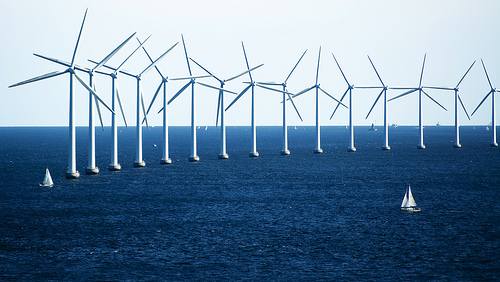
By Brian Merchant
Denmark is already powered by an impressive amount of wind power — the nation of five and a half million meets nearly 20% of its energy from wind farms. But in Denmark's latest energy strategy, plans have been ou tlined to increase that capacity to 42% over the next nine years. Eventually, the country's top government officials tell me, wind power may be used to run all of Denmark. How is that even possible?
The concrete plans call for ramping up wind to 42% and biomass to 20% by 2020. Beyond that, the nation will reevaluate its strategy. Anders Hasselager, Senior Policy Advisor for the Danish Energy Authority, described the nation's strategy thusly:
When I asked him how much of the mix wind power might make up in 2050, he remarked "all of it". That's not the officially announced strategy, but it's an interesting answer — biomass could be a near-term solution for the nation, and it could indeed plan on moving towards being primarily powered by wind.
But wind doesn't blow all the time, quoth the critic, so how could a country even consider relying on it for baseload power? Well, in Denmark's case, it has a shared transmission system set up with Germany and Sweden, which allows it to export power when the wind blows beyond the nation's demand, and to import it when the gales are lacking. Denmark has also embarked on an ambitious smart grid project that will better direct power to where its needed over longer distances.
It's unlikely that Denmark's energy will ever come 100% from wind power — but with rising distributed generation (solar panels on homes), truly massive potential for offshore wind in the North Sea, and ample biomass infrastructure to pick up the slack, don't rule out the possibility that they might come pretty close.
And what lessons might we learn from its example, in the interest of Denmark-ifying other societies' energy habits? Well, as the top brass keeps telling me here, making (and sticking to) a long-sighted, clearly laid-out plan is integral for stimulating investment and public support. Ample resources for R&D — in Denmark, those resources come partly from higher energy taxes — are important. Extracting sound lessons from the crises we face — rising oil prices, climate threats — and translating that into appropriate policy is another.
Article courtesy of worldgreen.org

